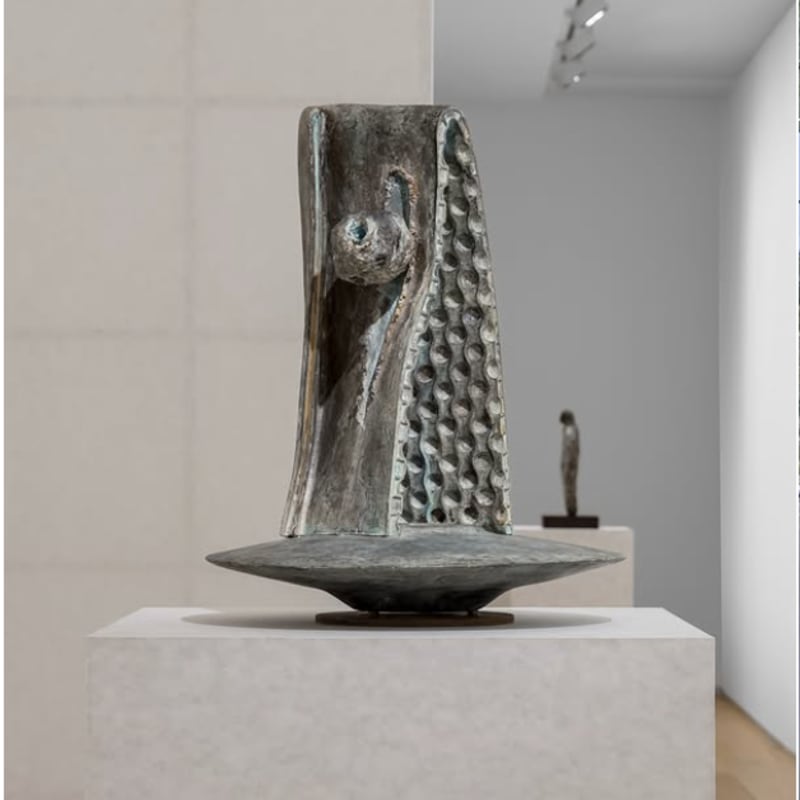

Overview
The title, Fine Gesture, refers to Maciejowski's conscious use of his characteristic gestural brushwork.
Galerie Thaddaeus Ropac Paris is holding an exhibition by Polish artist Marcin Maciejowski. The title, Fine Gesture, refers to Maciejowski's conscious use of his characteristic gestural brushwork. In the early 16th century, the writer Baldassare Castiglione (1478– 1529) coined the term sprezzatura to describe the ability to make strenuous actions seem effortless. The art historian Werner Busch used this term once in a lecture in Berlin to characterise the "courtly ease" of Rembrandt's late work. It is this ease and elegance that represent a desirable ideal for Maciejowski.
With the title the artist refers not only to the style of his own works, but especially to the painterly style of the works of legendary artists, such as Edouard Manet and Eugène Delacroix, represented in these pictures. Beyond these two levels of significance, it is the gestures of the protagonists, particularly of Marcin Maciejowski's wife Lidia, but also of those in Delacroix's and Manet's works, which can be referred to as fine gestures. A fine gesture is also interpreted as the good deed, referring to the narrative content of some of the scenes depicted.
In a virtuoso act of simplification and reduction typical of his work, Maciejowski combines the blatancy of a comic strip with soft, sporadically pastose, meticulous brushwork resembling the style of the old masters.
In his works Maciejowski juxtaposes everyday scenes from the Cracow art scene with historical icons, which he attempts to render in painting with an admiring gaze. “Maciejowski approached this new reality [of the cultural and political sytem changes since 1989 in Poland] with his trademark lack of pretension. He became an observer of contemporary life in both its banal and its official capacities, foregoing a close inspection of the world in favour of presenting its image, which he collects without feeling any urgent compulsion to compile them into a whole and comprehend them. [...] [The artist’s] individuality and originality emerge in the selection process. After all, ‘we only see what we’re looking at’, as John Berger once wrote” (Marek Swica).
Marcin Maciejowski was born in Babice near Cracow in 1974. From 1994 to 1996 he studied Architecture at the Cracow Polytechnic and from 1996 to 2001 Graphic Arts at the Academy of Art. Together with Rafal Bujnowski, Marek Firek, Wilhelm Sasnal and Josef Tomczyk he founded the Grupa Ladnie (Pretty Group), which denied the myth of the artist as a creative genius and questioned the power of art to change society. Since the beginning of the 2000s, Maciejowski's work has been exhibited internationally and is represented in distinguished public colllections such as the Essl Museum and Belvedere/Vienna, Gallery for Contemporary Art Bunkier Sztuki/Cracow, Schauwerk/Sindelfingen, Thyssen-Bornemisza collection and Los Angeles County Museum (LACMA).
From March to May 2010, Marcin Maciejowski held a comprehensive solo exhibition at the National Museum/Cracow, followed by further solo exhibitions in July and August 2010 in the Ostdeutsche Galerie/Regensburg and from February to June 2013 at the BALTIC Centre for Contemporary Art/Gateshead.
Marcin Maciejowski lives and works in Cracow.

















































































































































































